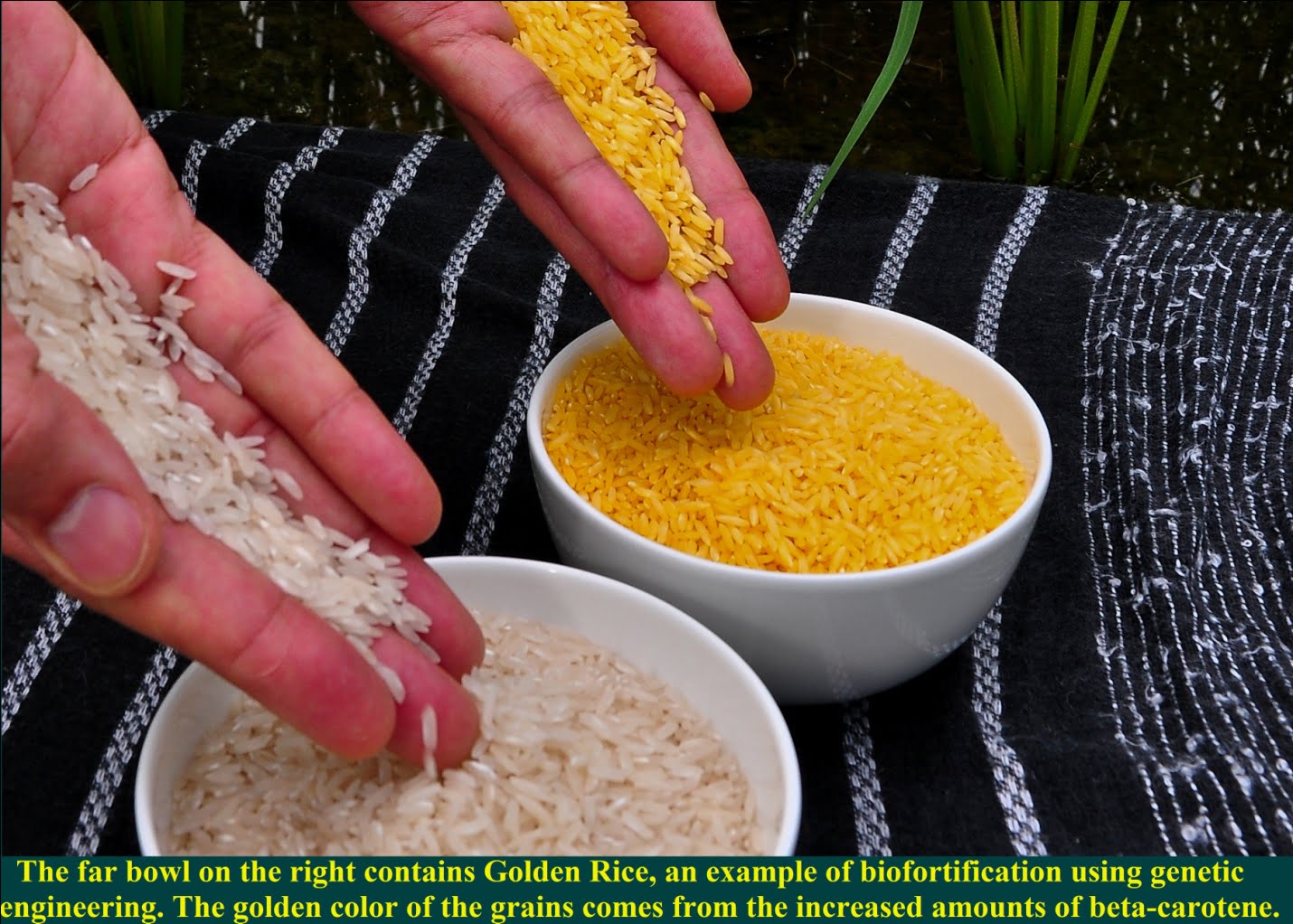Bio fortification is to improve strength or quality by adding something. It is the scientific method for improving nutritional value of food being consumed by people. Bio fortification is the process of breeding food crops which are rich in micronutrients. In bio fortification essential nutrients can be supplied through staple food. Plants are the most important and easy source of essential micronutrients. The half of the world population is affected by micronutrient malnutrition, especially in developing countries. Three billion people of the world are affected by micronutrient deficiency. Nutrients deficiency hinders the human developmental potential. The World Health Organization (WHO) and Consultative Group on International Agriculture Research (CGIAR) have given hidden hunger a high priority. The micronutrients iron, zinc, and vitamin A are mainly selected for intervention due to high magnitude of problem of malnutrition. The emphasis of WHO is on supplementation and fortification.
CGIAR focuses on bio fortification through its harvest plus program. The amount of micronutrient is being improved through breeding and biotechnological approaches. Excellent example of application of biotechnology is “Golden Rice” with adequate amount of carotene as all rice varieties lack carotene. Harvest program developing “supersorghum” in Africa with the increased level of vitamin A, vitamin E, iron and zinc and also improving its digestibility. Bio fortification is the breeding of crops to increase their nutrition value. This is performed through conventional selective breeding or via genetic engineering. Bio fortification is different from ordinary fortification because nutritious value is increased while growing of crops rather to add nutrients during processing of food.
Agriculture is the main source of nutrients for healthy life but agriculture sector mainly concentrate on yield or profitability. Agriculture science should include nutrition objective to their breeding programs. Modern agriculture has been successful in satisfying the nutrient requirement of the poor populations in developing countries. In last 40 years agriculture increased cereal production. However agricultural products not only contain more calories to overcome hunger, but also to produce food having abundant quantity of nutrients to overcome hidden hunger. Due to the deficiency of minerals and vitamins in the food one in three people is suffering from hidden hunger resulting in destructive health consequences (Kennedy et al. 2003).
The bio fortification strategy is to add micronutrient dense trait in varieties which have already favored agronomic and consumption traits such as high yield. Bio fortified staple foods cannot supply high amount of minerals and vitamins, as supplement and industrially fortified food, but these can help to intake micronutrient appropriately on daily basis throughout the life cycle. Bio fortified crops can also be established through traditional breeding methods, crops have enough genetic variation for preferred traits. In staple crops as rice it is not possible to add traits like vitamin A by the use of conventional breeding techniques because normal rice varieties are not rich in vitamin A. Plants synthesizes pro vitamin A in the photosynthetic part of the plant and these are not stored in the seed as a starch. Vegetative propagated crops are not suitable to develop through conventional breeding techniques because of the unavailability of genetic material as in case of potatoes. The desirable traits in the crop as taste can be improved by using conventional breeding techniques. In the development of more nutritious crops genetic engineering and agricultural biotechnology are very important and can play a vital role.
Human cells are able to produce only ten amino acids out of twenty. Amino acids are the basic units of protein hence the remaining necessary amino acids should be provided to cell through food. The body is not able to store amino acids so these should be supplied through daily intake. The requirement of essential amino acids of the people of most of the developing countries is not fulfilled through daily consumption of food because daily food does not contain so much protein. With the help of bio fortification process we can supply these valuable proteins through the staple food such as rice and potatoes.
Biofortification also helps to improve agronomic properties of the crop. Adequate nutrition is important to plant health. Micronutrients deficiency makes plant susceptible to disease. If there is no deficiency of any micronutrient then plant become resistant to diseases and the use of fungicide and pesticide is also reduced up to some extent. Bio fortification is most beneficial to people who are vulnerable to deficiencies in micronutrients such as vitamin A, zinc and iron, especially to children and women. Bio fortification increases the dietary diversity in the staple food crops which is the ultimate solution of hidden hunger. It is the easy way to overcome malnutrition in poor people who consume staple food daily. After initial investment, these can be easily adopted in various regions of the world.
Written by.
Nazer Manzoor, Dr. Nadeem Akbar, Dr. Shakeel Ahmad Anjum, Muhammad Ishfaq
Agro-biology Laboratory, Department of Agronomy, University of Agriculture, Faisalabad 38040, Pakistan








